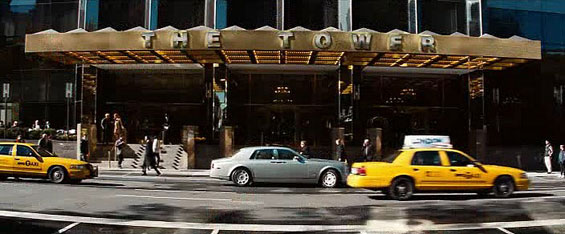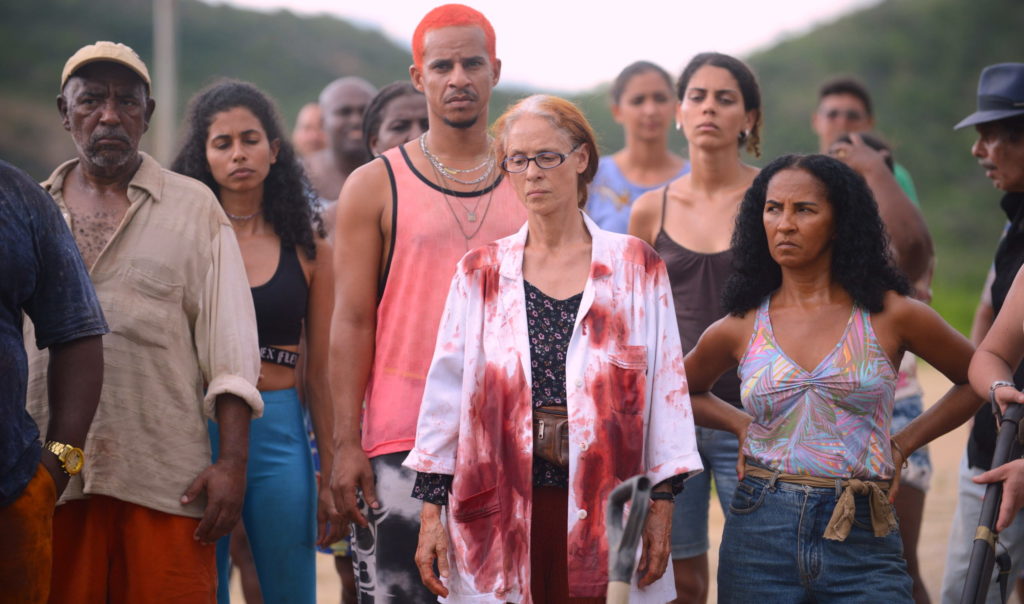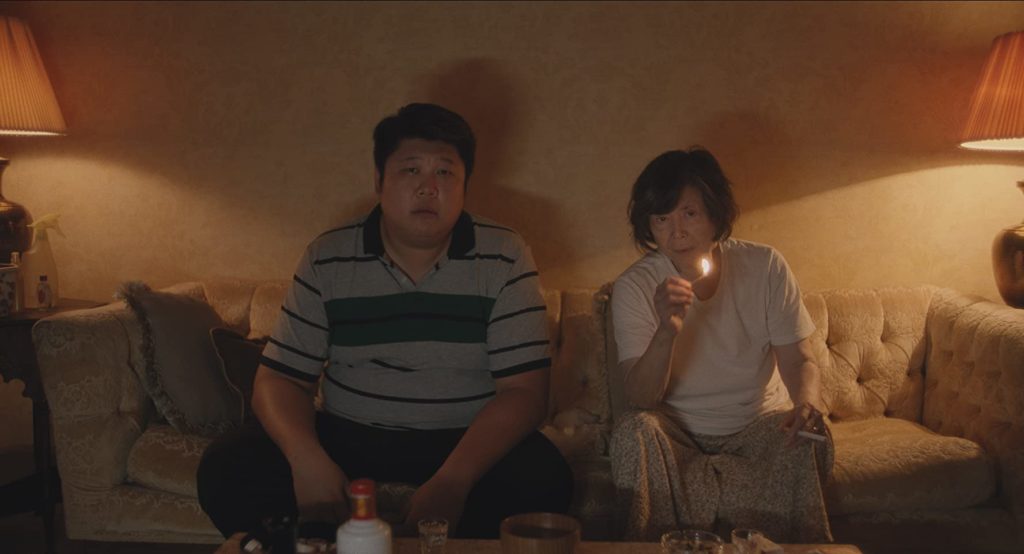
We can recommend a million movies for people to watch online, but there’s only so many dollars I want to throw to streaming services.
The last movie I watched outside the confines of my apartment was Eliza Hittman’s Never Rarely Sometimes Always (2020), which screened to Boston press at a multiplex in the Seaport on Wednesday, March 11. Hittman’s film was officially released two days later by a subsidiary of Universal Pictures, then pulled a few days after that as theaters continued to close nationwide. Meaning it probably had the shortest theatrical run of any feature ever distributed by a major American studio, or rather that it shares that distinction with two peers released on the same day, Bloodshot (2020) and The Hunt (2020)—which along with Never Rarely Sometimes Always and various other early-2020 film releases were shunted to video-on-demand (VOD) services like Amazon, iTunes, and Youtube almost immediately following the shutdown. Indeed those platforms seemed to have replaced corporate-owned multiplexes as the sales venue of choice for American film studios during the pandemic, a period of time that began with many of those companies sending their lower-profile movies straight to home screens at the new-high price of $19.99/rental.
Never Rarely Sometimes Always, a deft work of narrative agitprop that argues for specific expansions to US abortion rights, unapologetically prods at your political consciousness. And in the before times it would have at least shown at some independently-operated and non-profit spaces—so it’s worth thinking about who got your $19.99 instead.
In line with most studio-distributed VOD releases, Hittman’s film was made available on a large number of platforms simultaneously. But the surfeit of platforms offering it all lead back to one among just nine or ten parent companies: To be more specific, the initial digital release of Never Rarely Sometimes Always saw the film made available by TV providers as well as on platforms owned by Amazon, Apple (iTunes), Comcast/AT&T (FandangoNOW), Google (Google Play and Youtube), Microsoft, Sony (Playstation), and Walmart (VUDU, which sold to Fandango last month, placing it under the same Comcast/AT&T umbrella—which also makes both platforms the shared property of Universal Pictures and Warner Bros., in a roundabout sort of way).
And that’s it, for in this sector of the industry there is no equivalent for the independents, the non-profits, the mom-and-pops. Thus it’s entirely plausible to imagine that a minuscule percentage of the money you might’ve spent renting Hittman’s radically feminist movie through a company like, say, FandangoNOW was diverted into the contributions made to the Republican National Committee by a company like, say, Comcast. Pretty sad, but when the alternative is Bezos who can blame you?

Though ostensibly necessitated by the pandemic, this latest pivot to “premium” VOD represents not the first nor the last but only the latest attempt by major studios to circumvent the standard theatrical releasing model. Basically it’s just one more shot in an industry-specific cold war that’s likely to outlive us all: For example one particularly revealing but hardly isolated effort took place at the start of the last decade, when the same Universal Studios announced plans to make the comedy Tower Heist (2011) available for rental on “premium VOD services” (PVOD) just three weeks after its theatrical release for no less than $59.99. Intended as a test run available only to Comcast subscribers in Atlanta and Portland (making it an entirely in-house project for the Comcast-owned Universal), this digital release was nonetheless shut down by a crew of theater chains led by Cinemark, who threatened the studio with a boycott on the same general charges of ‘industry disruption’ that were levied once again when AMC and Universal squabbled over VOD releases earlier this year.
Thing is that all this wheeling and dealing over VOD distribution is more closely linked to the current rush of theater reopenings than any of us totally understand. Like, for starters: That studios were so quick to prioritize alternate home video distribution plans in the face of a historic global shutdown very clearly illustrates that these companies saw the pandemic as little more than a timely excuse to execute a new version of that cancelled Tower Heist test run. In fact I suspect the only reason that studios weren’t releasing new movies to VOD on a semi-weekly basis throughout the entirety of the pandemic is specifically because AMC threatened boycotts over the first wave described above—a matter that was only halfway sorted when that chain and Universal struck a deal to minimize the “theatrical window” to a period as short as 17 days, much to the chagrin of basically every NATO member that isn’t AMC.
But regardless of whatever bargains are struck to slow the bleeding, every day that movie theaters remain closed and studios come to better understand the economic specifics of releasing high-profile films directly to home screens via certain digital platforms is also a day where the industry’s power dynamics shift further towards the studios themselves, especially given that many of those same studios are now working to gain full control over at least one of those very same digital platforms. To wit earlier this summer Comcast erected their Peacock, which is currently a subscription-based platform à la Netflix, but will pretty surely also end up a PVOD platform within a few years time.
Because the biggest distributor of them all just made the same change: Earlier this year Disney launched its own subscription-based video platform, Disney+, and now will soon be offering Mulan as the first PVOD release available exclusively on that service (where it’s listed at $29.99 plus the regular monthly fees)—a distribution strategy that means the film won’t be playing at any of the American theaters reopening now or anytime in the next few months, because the choice to release it to D+ without a prior theatrical exclusivity window makes the film essentially forbidden in the eyes of major chains. And if they’re out, then why would a company like Disney bother doing business with anybody else?
And while these individual cases of vertically-integrated film distribution won’t shift the scales of the industry by themselves, it’s basic fucking logic that the more studios become involved with the home exhibition process the more control they’ll be able to levy on everything from rental prices to the makeup of the movies themselves—which makes this a matter of not just commerce but art too: Certainly the Mulan being released in a couple months is not the same movie that would’ve been made had Disney known before production it was basically going direct-to-video on a platform they owned themselves and to which 60 million people already pay monthly tithes.

This Mulan thing—a major distributor selling a high-profile film to US customers exclusively on their own digital platform for a price significantly higher than basically any movie ticket—is a real change. Because when it comes to the “commercial” sphere, American moviegoing has literally required a middleman—the exhibitor operating apart from the distributor—since the Paramount Decrees of 1948, which forced the primary studios of the time to divest their holdings in the exhibition industry and to halt the practice of block booking, leading to radical changes in both the movies getting made and the movies getting played. That very ruling was officially struck down earlier this month, by the way, further clearing the way for companies like Disney and Netflix to eventually purchase their own physical exhibition spaces (or in Netflix’s case, more of them)—plus allowing them to engage in block booking once again—all of this further cutting down the exhibition industry’s leverage towards maintain a short wall separating the movies you see in theaters and movies you watch at home, not to even mention the leverage allowing them to pick what films they play in the first place.
As if to close this particular loop, a Boston Globe feature published two months ago served as the public’s introduction to ShowcaseNOW, dubbed “the first video-on-demand service to be run by a major brick-and-mortar exhibitor” (in fact AMC has one too, but who cares). Under the circumstances that might seem like a fighting fire with fire kind of thing—if the distributors can own movie theaters, why can’t the movie theaters own VOD distribution services? But in this case the brick-and-mortar exhibitor is Showcase Cinemas, a chain owned by the Dedham-based holding company National Amusements, which happens to be the majority shareholder of ViacomCBS—meaning it also owns Paramount Pictures, which I believe makes Showcase Cinemas the biggest US theater chain to fall under the same corporate ownership as a movie studio (a practice that many presume was forbidden by the aforementioned Decrees but was actually quite legal so long as Showcase gives fair play to every studio’s films, which it does).
So despite the fact that ShowcaseNOW is among the first VOD services run by a major exhibitor, it’s far from the first one under the same corporate umbrella as a major studio. Which is a bit convoluted, but that’s precisely my point—that these lines have all gotten so blurry and so fast is far more notable than the launch of any individual platform. Because while Showcase Cinemas is not an industry leader by any means, National Amusements is almost certainly one of the most powerful media companies in the country. And while ShowcaseNOW is not a PVOD platform at the moment, its established infrastructure means that it could become one any time. And if and when that happens, National Amusements will have successfully organized a farm-to-table assembly line collapsing a film production studio, a theater chain, a home video distribution company, a television conglomerate, and finally a VOD platform under their sole consolidated holdings—a scenario that’s pretty much unprecedented at the present moment, but almost surely represents the future of commercial American cinema.

Just three days after Universal announced that corporate-owned VOD platforms were now the venue of choice for movies like Never Rarely Sometimes Always, the independent film distributor Kino Lorber sent a press release announcing the launch of Kino Marquee, a platform designed to “initiate virtual releases with participating theaters for [Kino’s] first run and repertory titles at least until theaters are able to reopen.” And within a week or so, it became clear what that announcement had actually represented: The beginning of “virtual cinemas”, which allow for theater-specific VOD rentals, and which have since late March become the venue of choice for basically every nonstudio-distributed commercial film release.
US-based virtual cinemas, which at this point number in the hundreds, typically operate as follows. The exhibitor’s websites provide a list of films “now playing,” and selecting any given one links you to a page where you can rent the movie directly from its distributor (rather than Amazon or iTunes or something else like them, these streams are usually hosted on Vimeo, or on its professional-grade sister site, VHX—although Kino, an outlier, has its own platform, which surely helped precipitate all this in the first place). The prices vary on a film-by-film basis, as do other terms like how long the rental lasts. But what’s consistent across every virtual cinema that I’ve “visited” is the general concept, of course loosely adapted from simpler times: The exhibitor selects films, then links you to the distributor selling them—who then sends back some of the profits to the exhibitor, theoretically keeping the market turning even as theaters remain shuttered.
During the shutdown at least six different Boston-area theaters hosted a “virtual cinema” on their webpage: the Brattle Theatre, Capitol Theatre, Coolidge Corner Theatre, Museum of Fine Arts, Somerville Theatre, and West Newton Cinema.
“When we first started offering these programs, we [thought], let’s not do the same things that the Coolidge is doing,” recalled Ned Hinkle, creative director of the Brattle Theatre, during an interview conducted by phone on June 20. “We don’t want to be stepping on toes. But then we were both running Lucky Grandma, and that’s one of the bigger successes that we’ve had. So I feel like each theater has its own audience, and then there’s also a crossover audience. And those folks, I don’t know—they might be renting a film multiple times from different locations, because it’s a way to support independent cinemas and filmmakers.”
Indeed this method of distribution is very specifically “a way to support independent cinemas and filmmakers,” because as likely goes without saying the big studios have taken absolutely no part in it. As mentioned way earlier, even an independently-produced-but studio-distributed film like Never Rarely Sometimes Always—originally scheduled to play at the Coolidge Corner Theater in March—was made available exclusively on corporate VOD platforms for its digital release.
“We can recommend a million movies for people to watch online,” Hinkle mentioned during our call, “but there’s only so many dollars I want to throw to [traditional] streaming services.”

This is all to say that the battle lines of American film distribution have never been drawn as clearly as they are right now: The major American studios are releasing films to traditional VOD platforms as well as to their own services (or splitting the difference by selling titles off to companies like Netflix). And smaller distributors are in many cases releasing films exclusively via the virtual cinema model, in direct conjunction with the independent and nonprofit exhibitors that most often show their films under more typical circumstances.
“Most of the distributors offering these films are regular partners with the Brattle, and it was exciting to see how quickly they were able to pivot and make films available in this way,” Hinkle said during the phone interview. “There are some really unexpected positives that I think are going to come out of this, at least for the Brattle. We’ll see how it goes, but first of all: I’ve been able to ‘run’ films that we may have screened just once at the Brattle, and make them available for two, three, or four weeks… So this has been liberating in terms of what we’re ‘programming,’ which is great because it’s kind of [going] back to that sort of long-tail word-of-mouth building-an-audience thing that art houses were built on before studios changed the narrative to being about how much money you make in the first weekend.
“And we hope to continue that moving forward, because until there’s a readily available and reliable vaccine for COVID-19, there’s going to be a lot of people who go to art houses that aren’t going to feel comfortable going to a movie theater,” he continued. “So hopefully this service from these distributors will continue to be available. … Because beyond people who are part of an at-risk group, there are film fans across the country who are now able to engage with cinemas that they might’ve never been able to go to because they’re differently abled. And that’s exciting—so maybe there is a way that we can continue to offer some kinds of films curated under the Brattle umbrella that will get to people who could never make it to the Brattle, for one reason or another.”
One could draw various distinctions, superficial and significant, between the approaches that the Boston-area theaters have taken to virtual cinema distribution. But along the lines of that last point above, the biggest distinction seems to be the extent to which they plan to carry the practice forward: In emails and interviews conducted with representatives of those movie theaters over the past couple months, responses seemed to run the full range of possibilities—and indeed some institutions phased out their online programming as soon as the reopening process began, while others continue to work on longer-term implementation.
The West Newton Cinema, which is among the few Boston-area theaters currently open, no longer advertises its virtual cinema links. The Capitol Theatre and Somerville Theatre, both managed by Frame One Theaters, have not updated their lineups significantly during the summer; operations manager Ian Judge, who has at this point been furloughed along with the rest of the Frame One staff, noted via email that “These [online releases] were good, but we made more money on our weekly popcorn pop-up curbside sales than we did on these virtual titles”. And the MFA, which has exhibited a few movies and hosted one festival on its film page since the shutdown, now uses the same digital space to advertise the return of in-person events beginning with outdoor screenings on September 3 and 17.

But the Brattle and the Coolidge are planning for a near future—at least—where the physical and virtual cinemas operate alongside one another: “[Upon reopening], we’ll run inhouse and virtual screenings, and are making changes to our website to support this ‘duplex’ model,” wrote Katherine Tallman, executive director and CEO of the Coolidge Corner Theatre Foundation, in an email back in June.
“Trying to determine what films are going to have a greater appeal on the big screen is what I do already,” Hinkle said during our call, while talking about the prospects of running a “duplex model.” “The more ‘cinematic’ titles are the ones we’re choosing to play [at the Brattle itself], but that doesn’t mean the smaller titles, like Fourteen, aren’t just as valid and just as in need of finding an audience. So the idea that this [could become a] hybrid form of theatrical and VOD—where the distributor is basically giving a kickback to the theaters to help promote titles that otherwise would’ve been a drop in the ocean of what’s available on traditional streaming—I find that interim thing to be very exciting. We could leave it up to the audience member to make a decision about whether they want to experience a film as it was meant to be seen, with an audience on the big screen, or to watch it at home.”
In the context of places like the Brattle, I too find those prospects genuinely exciting.
But I also must observe that America’s biggest film-industry corporations, as they match and probably surpass the vertically-integrated National Amusements model, will surely be selling those shifts to us in the same language—as a matter of “audience choice”. Of course that won’t be the case, as really it’s the removal of the same: More venues for purchase maybe, but what’s it matter when they all lead back to one pocket?
And should the dynamics continue to lean further towards the studios, as the fall of the decrees, the lack of governmental support for arts and entertainment-industry operations, and basically every other recent occurrence suggests they will, then one can safely presume it will have generational consequences effecting what kinds of films are made, the ways in which they’re produced, and the platforms on which they’re distributed. And if things eventually get so monopolized that the only way to see even an independent film picked up for release by an unnamed Studio is by subscribing to Studio+, visiting the Studioplex, or by renting the movie from one among the handful of VOD platforms owned by either the Studio’s parent company or a conglomerate of comparable size, then, well—whose choice was that?
This is the sixth in a series of DigBoston articles regarding the status of local film institutions and theaters during the coronavirus pandemic. Previous entries reported on the Brattle Theatre, the Coolidge Corner Theatre, the Independent Film Festival Boston, and the city’s corporate-owned multiplexes. A shorter, split-up version of this report was first published in the 6/25 and 7/2 issues of the paper under the headlines Status Report: Films on Demand and Status Report: Boston’s Virtual Cinemas.

